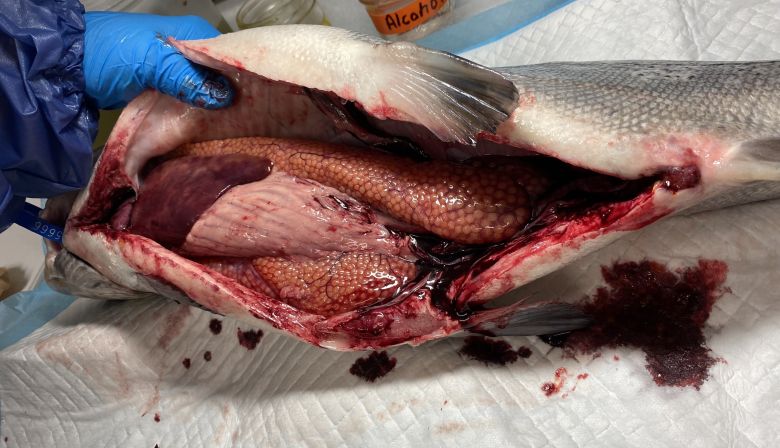
Subscribe & stay up-to-date with ASF


St. Andrews – ASF researchers have removed 46 escaped aquaculture salmon from the Magaguadavic River fishway in southwest New Brunswick since August 1, including ten fish captured on Tuesday, September 5th.
Aquaculture escapees are a high-level threat to wild Atlantic salmon, especially endangered populations like those in the Bay of Fundy and Gulf of Maine. ASF is calling for a robust, transparent response to this discovery from provincial and federal governments, especially with the fall spawning season for wild salmon approaching.
“We have reported our discoveries to officials in New Brunswick, Nova Scotia, and Fisheries and Oceans Canada, but we haven’t received any information about what, if anything, they are doing to protect wild salmon from these escapes,” said Jonathan Carr, ASF’s vice president of research and environment.
“If we’re picking up fish in the Magaguadavic, it’s almost certain there are many, many more out there headed for places like the Hammond, Nashwaak, Upper Salmon, and dozens of other rivers nearby,” Carr added.
ASF began monitoring the Magaguadavic River fishway for aquaculture salmon in 1992. Since then, very few escapes have been connected to known breach events, evidence that aquaculture salmon escape frequently, most often undetected. ASF researchers identify escapes through visual inspection and analyzing a scale sample from the fish.
This year, some of the escapees appear to be of unknown origin, because they were captured as early as August 1st.
Some of the recent discoveries could be from two Cooke Aquaculture sites, Davidson’s Head near Deer Island and Long Pond near Grand Manan where company officials confirmed to ASF that escape events occurred. The company blamed seals in both cases and said the events were reported to regulators on August 25th, August 30th, and August 31st.
None of the fish removed from the Magaguadavic match the 50,000 small salmon that escaped from a Cooke cage in Maine in early August, an incident also blamed on seals. Those fish were all reported to be between 200 and 400 grams.
All salmon that ASF has recovered this year range in size from one to 10 kilograms, most were female, including some filled with eggs. The only other company with salmon aquaculture operations in the Bay of Fundy, Mowi, tells ASF they have detected no breaches at their sites.

Aquaculture Atlantic salmon are genetically different from wild Atlantic salmon because of decades of intensive breeding for commercial traits, and crossing with European Atlantic salmon, even though importing and releasing non-native fish is prohibited under Canadian law.
However, escapees are still capable of spawning with wild Atlantic salmon, a phenomenon that has been widely documented. The hybrid offspring are unfit for survival in nature and extensive peer-reviewed studies have determined interbreeding contributes to wild Atlantic salmon decline and collapse.
“These are genetic pollutants that have long-lasting, negative effects on wild salmon and whole ecosystems,” said Andrew Clarke, ASF’s director of conservation campaigns. “The lack of follow-up action and accountability is evidence that governments choose to turn a blind eye, even when affected populations are listed under Canada’s Species at Risk Act, like inner Bay of Fundy Atlantic salmon.”
Backgrounder: Aquaculture escapes and wild Atlantic salmon
Chart: Wild and aquaculture salmon returns to the Magaguadavic River since 1992
Gallery of downloadable images
To arrange interviews in English or French contact:
Neville Crabbe
ncrabbe@asf.ca
506-467-6804